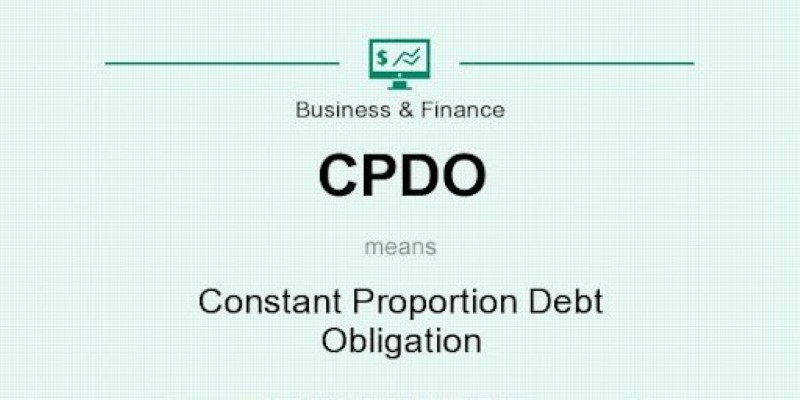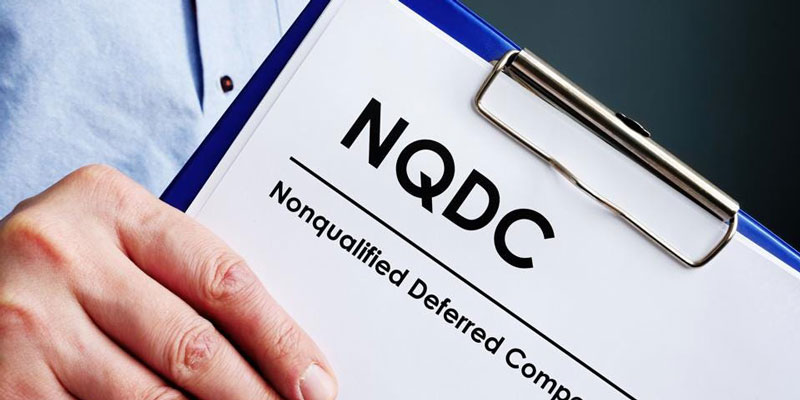Constant Proportion Debt Obligation (CPDO): What It Is and Why It Has Risks
Nov 26, 2024 By Georgia Vincent
If you have ever encountered the world of structured finance, you likely encountered a Constant Proportion Debt Obligation (CPDO). This financial instrument was introduced in the mid-2000s and promised high returns by leveraging credit exposure. CPDOs are a product of financial engineering designed to manage credit risk in a structured way while offering stability and enhanced yield.

As we all know, CPDOs were sold promising to balance risks by dynamically adjusting the exposure of such products to credit markets. Let's start by exploring what exactly these CPDOs are and how they work, and then explain why they are riddled with huge limitations.
What Is a Constant Proportion Debt Obligation?
CPDO is a structured financial product that takes high returns through credit derivative trading. It basically takes exposure toward credit indices like iTraxx or CDX and dynamically increases or decreases that exposure depending on how the market performs. It is all about balance: the more volatile it gets, the more exposure through added potential loss as the conditions calm down for locking in a profit in scale.
This is more or less a financial strategy with a moving target. The "constant proportion" refers to how the portfolio is frequently updated to maintain a fixed percentage between safe assets and risky credit exposures. In this way, the CPDO has an inherent mechanism wherein it buys more when the market declines and sells out when the market goes higha strategy aimed at smoothing returns.
Such instruments became popular because they offered high returns under the pretense of low risks. Ratings agencies also bestowed CPDOs with a very high rating, making investors believe they were low-risk investments akin to government bonds but offering much higher returns. Well, that wasn't all.
Limitations and Risks of CPDOs
The Complexity of the Model
The math behind CPDOs is anything but simple. The dynamic reallocation of credit risk, while elegant on paper, can be extremely hard to predict in practice. Many investors, including sophisticated institutions, struggled to fully understand how CPDOs worked. This complexity made them vulnerable to mispricing and incorrect risk assessments.
Rating agencies compounded the problem by giving CPDOs AAA ratings, assuming markets would behave predictably. However, financial markets are notorious for defying expectations, especially during crises. The models driving CPDO performance didn't account for extreme market conditions like those seen in 2008, leading to significant losses.
Over-reliance on Market Liquidity
CPDOs rely heavily on the ability to trade credit derivatives easily. When market liquidity dries upas it did during the financial crisisthe strategy behind CPDOs starts to falter. Without sufficient liquidity, the instrument cant adjust its exposure quickly enough, resulting in amplified losses.
In calm markets, the strategy can work as intended, with CPDOs generating steady returns. However, in volatile or illiquid markets, the rebalancing mechanism can backfire. Instead of stabilizing returns, it exposes the investment to more risk than originally intended.
Pro-cyclicality and Risk Amplification
One of the fundamental issues with CPDOs is that they are inherently pro-cyclical. This means they reinforce trends in the marketbuying more during downturns and selling during upswings. In theory, this should help smooth returns. However, in practice, it can increase vulnerability during market crises.
During a downturn, CPDOs need to increase their exposure to credit risk just when the market is most fragile. This forced buying can push prices down further, exacerbating losses across the financial system. The same principle applies during rallies, where the instrument reduces exposure, potentially missing out on further gains.
The Fallacy of High Ratings

The high ratings assigned to CPDOs before the financial crisis were based on optimistic assumptions about market behavior. Many investors took these ratings at face value, believing that these instruments were as safe as traditional bonds. However, CPDOs depend on the ongoing health of credit markets and the proper functioning of their rebalancing strategyneither of which can be guaranteed.
When markets collapsed, CPDOs quickly lost value, exposing the flaws in the ratings agencies assessments. This eroded investor trust, leading to the instrument's rapid fall from grace. Today, CPDOs serve as a cautionary tale about over-relying on financial models and credit ratings.
CPDOs and the 2008 Financial Crisis: A Cautionary Tale
The downfall of CPDOs during the 2008 financial crisis serves as a stark reminder of the risks associated with financial engineering and over-optimistic credit ratings. Before the crisis, these instruments were marketed as innovative, low-risk products with the promise of high returns, luring investors seeking stability with enhanced yields. However, when markets unraveled, CPDOs exposed their underlying weaknesses, highlighting several crucial flaws.
One of the main issues was the over-reliance on liquidity, as CPDOs could only function effectively if credit derivatives could be bought and sold without disruption. When the market dried up during the crisis, CPDOs couldn't adjust exposures quickly enough, leading to severe losses. Furthermore, their pro-cyclical nature, which required buying more credit risk during downturns, amplified the impact of the crisis by forcing distressed sales into an already declining market.
Credit ratings also played a critical role in their downfall. Agencies awarded CPDOs with top-tier AAA ratings, luring investors into a false sense of security. However, these ratings failed to account for extreme market scenarios, such as those in 2008, resulting in catastrophic losses when the instruments unraveled. The collapse of CPDOs eroded trust in credit ratings, emphasizing the need for deeper due diligence beyond the ratings themselves.
Conclusion
The rise and fall of Constant Proportion Debt Obligations (CPDOs) offer valuable lessons about the risks of financial engineering. While CPDOs initially promised high returns with controlled risk, their complexity and reliance on smooth market conditions ultimately led to their downfall. They highlight the dangers of pro-cyclical strategies and the pitfalls of trusting credit ratings without understanding the underlying risks.

Understanding and Preventing Identity Fraud in Commercial Applications

Is Social Security Taxed After Age 70?

All About Basics of Algorithmic Trading: Concepts and Examples

Premium vs Discount Bonds: Which Should You Buy?

Deciphering Public Offerings: Direct Listings versus IPOs

Why Would a Stock Have No Par Value? What to Consider

Mastering Marginal Tax Rates: A Comprehensive Guide

The Rise and Fall of the Vancouver Stock Exchange: Lessons from a Unique Market

What Is An Imputed Cost? Everything You Need To Know

